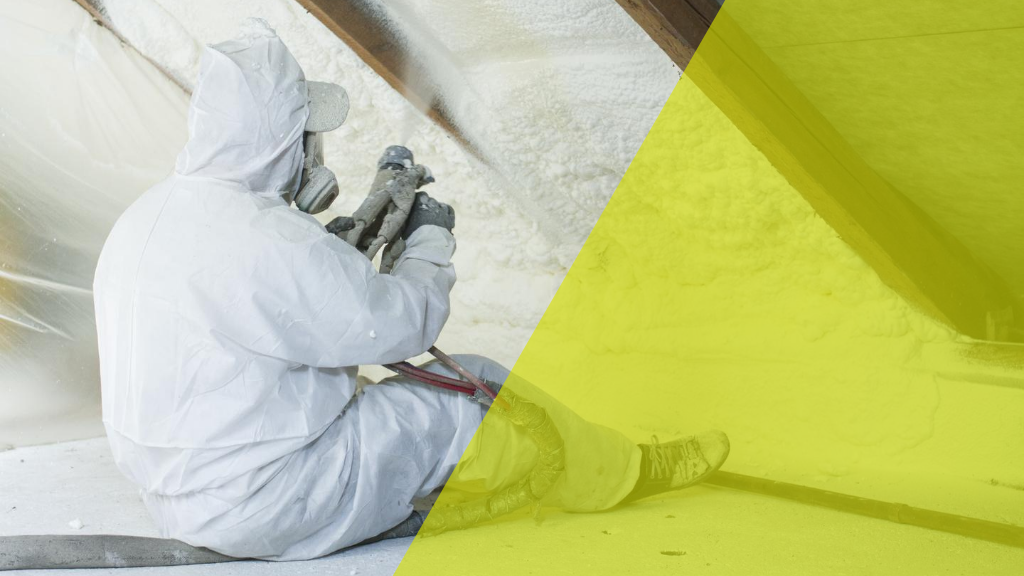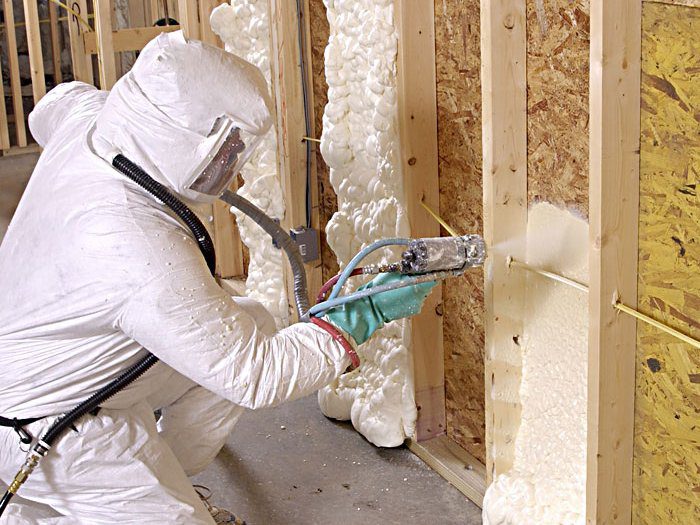Spray Foam: The Ultimate Service for Air Sealing and Insulation
Spray foam insulation has arised as a leading service for efficient air sealing and thermal insulation, offering an unique combination of properties that establish it apart from standard approaches. Recognizing the complete range of its advantages, installation processes, and contrasts with various other insulation kinds is important for making notified choices.
What Is Spray Foam?
Spray foam is a versatile insulation product that combines the concepts of air securing and thermal resistance to enhance energy effectiveness in buildings. Made up primarily of polyurethane or other comparable compounds, spray foam is used as a fluid that increases upon call with surface areas, developing a strong, constant layer of insulation. This one-of-a-kind home permits it to fill voids, cracks, and voids that typical insulation materials might forget, supplying a premium air seal.
There are two major types of spray foam: open-cell and closed-cell. Open-cell spray foam is lighter and extra versatile, supplying outstanding sound absorption and a reduced R-value per inch - Spray Foam. In contrast, closed-cell spray foam is denser, giving a higher R-value, wetness resistance, and added structural honesty to building parts
The application process normally involves specific tools, guaranteeing a smooth application that complies with various substrates, consisting of timber, concrete, and steel. This flexibility makes spray foam ideal for both new building and constructions and retrofitting existing structures. Its capability to develop an airtight barrier dramatically adds to minimizing power consumption and enhancing interior air top quality, thereby making it a favored selection amongst home builders and home owners alike.
Advantages of Spray Foam Insulation
One of one of the most significant benefits of spray foam insulation is its extraordinary capability to create a continuous air obstacle, which properly minimizes power loss. Unlike typical insulation materials, spray foam expands to load gaps and fractures, ensuring that air leakage is considerably minimized. This particular not only improves power effectiveness however also leads to lower energy costs with time.
In addition, spray foam insulation gives exceptional thermal resistance, adding to a much more stable interior setting. Its high R-value per inch permits for efficient insulation in restricted spaces, making it optimal for attics, wall surfaces, and crawl rooms. The moisture-resistant properties of spray foam aid stop mold and mold growth, promoting much healthier living conditions.
Another essential advantage of spray foam insulation is its sound-dampening qualities (Spray Foam). It effectively minimizes sound transmission in between areas, creating a quieter and extra comfortable home setting. The toughness of spray foam likewise stands out, as it does not droop or resolve gradually, preserving its efficiency throughout its lifespan
Just How Spray Foam Functions
Recognizing exactly how spray foam insulation works is important for appreciating its effectiveness in air sealing and thermal resistance. Spray foam insulation consists of 2 primary elements: isocyanate and polyol material. When these elements are blended, they undergo a chain reaction that creates the material to broaden rapidly, developing a dense foam that fills dental caries, spaces, and splits.
As the foam increases, it sticks to surfaces, forming an airtight seal that considerably minimizes air seepage. This characteristic makes spray foam insulation highly efficient at protecting against drafts and wetness infiltration, which can bring about energy loss and damages with time. Additionally, the closed-cell variant of spray foam provides exceptional thermal resistance because of its inflexible framework, effectively reducing warm transfer.
The distinct homes of spray foam allow it to comply with irregular surfaces, making sure detailed insurance coverage and a smooth barrier. As a result, spray foam insulation not only improves energy effectiveness however also adds to improved indoor air quality by reducing the buildup of irritants you could look here and toxins. Ultimately, recognizing the technicians image source behind spray foam emphasizes its duty as a remarkable option for insulation and air sealing in both commercial and household applications.
Installment Process Overview

Before setup, the room should be appropriately cleaned and prepped, making sure that surface areas are totally free from dust, wetness, and particles. This action is essential due to the fact that impurities can compromise adhesion and general efficiency. When the area is prepared, the application entails blending both elements of the spray foam, which increases upon contact and fills up spaces successfully.
Educated specialists need to carry out the setup, making use of customized equipment to guarantee consistent protection and ideal thickness. Security precautions, including wearing safety equipment and ensuring appropriate ventilation, are vital during this procedure. After application, the foam typically treatments quickly, creating a strong barrier that enhances power efficiency.
Comparing Spray Foam to Conventional Insulation
When examining insulation alternatives, spray foam insulation stands out in contrast to conventional products such as fiberglass and cellulose. Unlike fiberglass and cellulose, which can enable air infiltration, spray foam increases upon application, filling up gaps and holes to create an impermeable seal.
Additionally, spray foam gives a higher R-value per inch than traditional insulation kinds, offering even more reliable thermal resistance in a thinner account. This characteristic is especially helpful in areas with limited dental caries deepness. Additionally, spray foam is resistant to wetness and mold and mildew growth, which can be a substantial worry about cellulose and fiberglass, particularly in damp settings.
Nonetheless, spray foam insulation usually lugs a higher upfront expense than its typical equivalents. Homeowners need to consider this initial investment versus long-lasting energy savings and efficiency advantages. Ultimately, while both insulation types serve their function, spray foam arises as a more innovative option for contemporary insulation demands, especially in terms of air securing and thermal efficiency.

Conclusion
In recap, spray foam insulation stands for an extremely efficient option for achieving optimal air sealing check that and thermal resistance. Its unique homes, including moisture resistance and sound dampening, make it ideal for numerous applications in both brand-new buildings and retrofitting tasks (Spray Foam). Although the first prices may be higher contrasted to traditional insulation products, the lasting benefits, such as substantial energy financial savings and improved indoor air top quality, justify the investment and highlight its value in modern-day building methods.
Spray foam insulation has actually emerged as a leading remedy for efficient air securing and thermal insulation, using a distinct mix of residential properties that set it apart from traditional approaches.Spray foam is a flexible insulation product that integrates the concepts of air sealing and thermal resistance to boost energy effectiveness in structures.When reviewing insulation choices, spray foam insulation stands out in comparison to typical materials such as fiberglass and cellulose. Inevitably, while both insulation types offer their purpose, spray foam arises as an extra innovative service for modern insulation needs, especially in terms of air sealing and thermal effectiveness.
In recap, spray foam insulation represents a highly effective remedy for achieving ideal air sealing and thermal resistance.